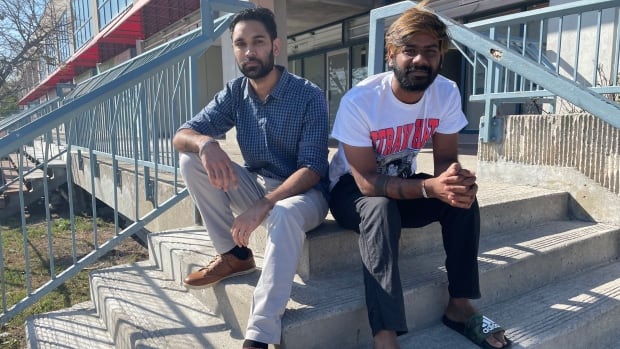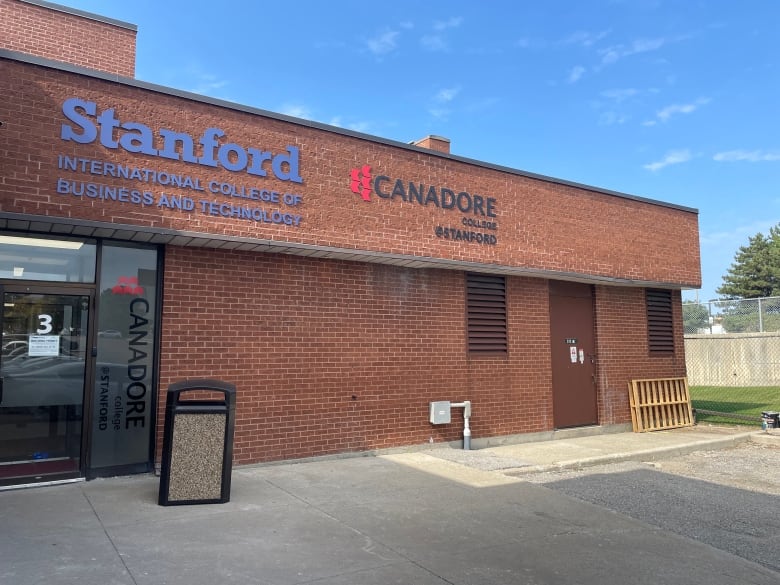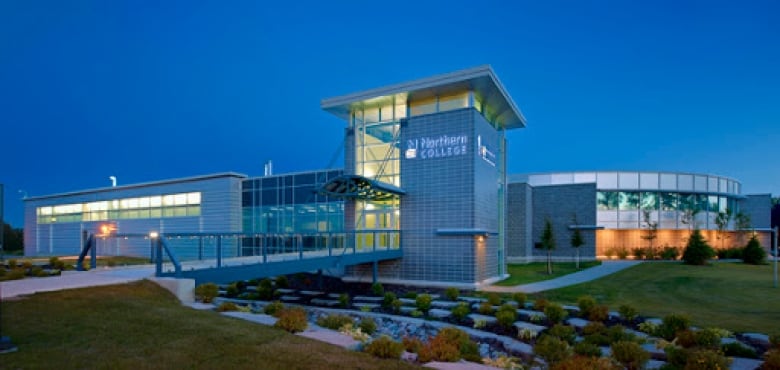
Students are taking a break between classes on this sunny September day just outside Pures College’s Scarborough campus, where diplomas are issued from Timmins’s Northern College.
It’s a familiar back-to-school scene — one that plays out across Canada. Except at Pures College in suburban Toronto, almost all the students are from India.
“Wherever I go, there are Indians,” says Joseph Kadasani, a second-year business management student. “I don’t feel like I’m in a foreign country right now.”
Fellow business student Khushleen Kaur echoes a similar sentiment.
“I thought I would be interacting with different cultures. But here I am with all the Indian students. It’s not a very international experience.”
According to data from the Ontario Ministry of Colleges and Universities, almost 80 per cent of all students enrolled at Northern College come from abroad, and almost all of them are from India.
Other northern Ontario-area colleges have similar data.
For example, seven out of 10 students enrolled in North Bay’s Canadore College are international students, with 94 per cent of them listing India as their country of origin.
Ontario colleges’ reliance on Indian students
Like other institutions across the province, northeastern Ontario’s public colleges have partnered with private colleges in southern Ontario over the past decade.
The arrangement allows them to fund operations in northern campuses by tapping into the lucrative international student demand for public college diplomas in the Greater Toronto Area (GTA).

In a 2021 report, the office of the province’s auditor general concluded that, were it not for the international students’ fees they collect from private college partners, Canadore, Cambrian and Northern College could have incurred annual losses in recent years.
Data gathered from these institutions’ annual reports show how the reliance on international student programs has only increased since 2019, despite the global COVID-19 pandemic.
It’s a trend that’s happening across Canadian colleges and universities, but the data is particularly stark in Ontario.
For the 2023-2024 school year, international students are expected to make up half of the student body in the province’s public colleges.
“Indian students not only contribute twice the amount of money to the college system than Canadian students do, they also contribute slightly more than does the government of Ontario,” notes Alex Usher, president of Toronto-based consulting firm Education Strategy Associates.
That’s even more pronounced in northern Ontario.
At Northern College, for instance, revenues from international programs accounted for nearly double that of government grants and domestic student fees combined this year.
Northern institutions ‘trying to escape the north’
There are many reasons northeastern Ontario colleges have come to depend so heavily on that revenue.
Unlike their southern counterparts, colleges in the north have a small domestic base.
“A college like Niagara or Loyalist has a base of between 2,000 and 6,000 students to work from,” said Usher. “Some of the colleges in the north have a base of about 700 students.”
It is much more expensive to run programs in small domestic markets, as the Ontario government provides grants on a per-student basis.

This puts colleges in the north in a difficult situation as the region has an aging population, with fewer younger people than there were a generation ago.
Usher said that by setting up satellite campuses down south, “Northern institutions are trying to escape the north.”
Revenues from domestic fees have also been impacted by the cut and subsequent freeze on tuition fees imposed by the Doug Ford government in 2019.
Grant revenues have also been in relative decline over the past decade, and they weren’t relatively high to start with.
“On a per-student basis, the Ontario government only spends 44 per cent of what the other nine provinces do,” according to Usher.
In 2021, the province’s auditor general also pointed out that colleges do not access public funding for repair and maintenance work on their buildings and properties.
Why this is a risky situation
In their annual reports, northeastern Ontario colleges talk about diversification of international student recruitment. Some of them mention that efforts are underway to get into African or South American markets.
This is because there is an awareness that relying solely on one country is inherently risky.
Recent developments show how immigration policies and geopolitical landscapes can change at any time.
In the last couple of weeks, India suspended its visa services in Canada following Prime Minister Justin Trudeau’s allegations that the country was involved in the killing of a Canadian Sikh leader.
Some people fear Indian students could become collateral damage in this diplomatic spat.
A sudden retreat of the Indian market would wreak havoc on the finances of the province’s post-secondary institutions, just as it did to Laurentian University when Saudi Arabia pulled its students out of Canada in 2018.
That institution later became the first Canadian university to file for creditor protection.
On top of that, the Canadian government has recently been floating around the idea of capping the number of international students admitted into the country as a way to ease the housing crisis.

International student demand for public college diplomas is mostly driven by the hope of it eventually leading to Canadian citizenship. But unless Ottawa changes its immigration policies, it will become apparent in the next few years that that path is not as guaranteed as it once seemed.
A recent Senate of Canada report highlights how the federal government issues far more study permits than there are available permanent resident spots, with that gap set to widen in the next few years. There are fears this could tarnish Canada’s reputation as an immigration destination and eventually hurt Ontario college’s ability to attract international students.
What’s being done to rely less on international funds?
Last year, the Ford government capped the number of international students that could be admitted to private-public partnership campuses to 7,500.
But that cap doesn’t change anything for most northern colleges, as their numbers are already below that (except for Canadore College, which will lose $12 million this year as a result of this policy).
Colleges in Ontario’s north have long talked about putting strategies in place to diversify their revenue streams, although recent data suggests these haven’t had much of an impact yet.
It takes approximately two to three years for new markets to become fully functional.– Kyle Gennings, spokesperson for Northern College
In a statement to CBC News, Northern College spokesperson Kyle Gennings said it’s too early to assess whether the strategies to diversify international student recruitment are yielding results.
“It takes approximately two to three years for new markets to become fully functional,” he said.
The institution also hopes programming development initiatives — such as microcredentials and applied degrees — will help attract more domestic students.
“These are specifically tailored to the needs of Northern College’s catchment region,” added Gennings.
In its 2023-2024 Business Plan, Canadore College says while it is aggressively pursuing opportunities to lessen its reliance on international student enrolment, “it is impossible to commit to the success of these efforts.”
Canadore does have students from countries like China, Brazil and Nepal, but nothing anywhere close to the numbers it gets from India. There are many reasons for this — it’s a market where many people speak English and want to immigrate, especially to a country where they already have ties to family or friends.
But if northern colleges could no longer rely on the tuition fees of students from that country, or on international students in general, what would happen?
“They would be done,” said Usher. “The government would have to come with emergency funding for these institutions.”
He isn’t convinced the province would be willing to do that.
“Nobody thought they would let Laurentian become insolvent either, right? And I think what you’ll get here is a number of Laurentians,” he said, referring to the Sudbury university.

